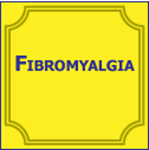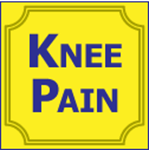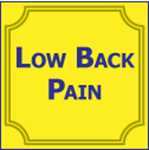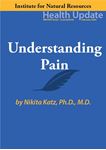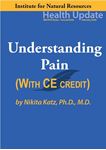You have no items in your shopping cart.
Pain
Autoimmune Disease & Multiple Sclerosis - 3 hours
Identifies the causes and types of autoimmune disease. Identifies common symptoms of multiple sclerosis. Describes the issues in diagnosing multiple sclerosis. Identifies possible courses of multiple sclerosis disease progression. Identifies available therapeutic options, including disease-modifying drugs, therapeutic agents for alleviating symptoms, and behavior modifications that may benefit a multiple sclerosis patient.
$30.00
Chronic Pain Disorders & Treatments
Describes some of the effects of chronic pain on the brain. Lists the major chronic pain disorders and their treatments. Explains the differences between migraine and tension headaches. Identifies the major sources of back pain and their effective treatments. Describes the differences between trigger points and tender points. Lists methods and techniques of lowering the risk of chronic pain disorders. Discusses the concept of multidisciplinary pain management. Describes the applications of non-pharmacologic pain treatments like cognitive-behavioral therapy, biofeedback, and meditation.
$30.00
Chronic Pain Disorders & Treatments - Ebooklet
Describes some of the effects of chronic pain on the brain. Lists the major chronic pain disorders and their treatments. Explains the differences between migraine and tension headaches. Identifies the major sources of back pain and their effective treatments. Describes the differences between trigger points and tender points. Lists methods and techniques of lowering the risk of chronic pain disorders. Discusses the concept of multidisciplinary pain management. Describes the applications of non-pharmacologic pain treatments like cognitive-behavioral therapy, biofeedback, and meditation.
$25.00
Coping with Chronic Pain - Streaming Video - 6 Hours (w/home-study credit)
Explains the current state of pain management in the United States. Describes the multidisciplinary approach to pain management. Reviews the 23 different pain management modalities currently available. Describes steps to create a comprehensive pain management plan. Lists the five key coping skills for helping chronic pain patients. Discusses treatment options for chronic dental and facial pain. Describes how the information in this course can be utilized to improve patient care and patient outcomes. Describes the implications for dentistry, mental health, and other health professions.
$83.00
Coping with Chronic Pain - Streaming Video only *NO CE - 6 hours
Explains the current state of pain management in the United States. Describes the multidisciplinary approach to pain management. Reviews the 23 different pain management modalities currently available. Describes steps to create a comprehensive pain management plan. Lists the five key coping skills for helping chronic pain patients. Discusses treatment options for chronic dental and facial pain. Describes how the information in this course can be utilized to improve patient care and patient outcomes. Describes the implications for dentistry, mental health, and other health professions.
$69.00
Coping with Chronic Pain: Presented by David Cosio - DVD - 6 Hours (w/Home-study)
Explains the current state of pain management in the United States. Describes the multidisciplinary approach to pain management. Reviews the 23 different pain management modalities currently available. Describes steps to create a comprehensive pain management plan. Lists the five key coping skills for helping chronic pain patients. Discusses treatment options for chronic dental and facial pain. Describes how the information in this course can be utilized to improve patient care and patient outcomes. Describes the implications for dentistry, mental health, and other health professions.
$83.00
Coping with Chronic Pain: Presented by David Cosio - DVD only *NO CE - 6 hours
Explains the current state of pain management in the United States. Describes the multidisciplinary approach to pain management. Reviews the 23 different pain management modalities currently available. Describes steps to create a comprehensive pain management plan. Lists the five key coping skills for helping chronic pain patients. Discusses treatment options for chronic dental and facial pain. Describes how the information in this course can be utilized to improve patient care and patient outcomes. Describes the implications for dentistry, mental health, and other health professions.
$69.00
Emotions, Moods, & Pain
Lists and describe the six basic emotions that have unique facial expressions. Explains the difference between emotions and moods. Discusses the relationship between emotions, moods, and pain. Identifies brain structures and neurochemicals that play a role in both moods and pain. Discusses the relationship of pain to both acute stress and chronic stress. Lists the similarities between stress management and pain management. Identifies the similar brain areas involved in both physical and emotional pain. Explains the interactions between anxiety disorders, depression, and pain. Discusses cognitive behavioral therapy and its role in pain management.
$30.00
Emotions, Moods, & Pain - Ebooklet
Lists and describe the six basic emotions that have unique facial expressions. Explains the difference between emotions and moods. Discusses the relationship between emotions, moods, and pain. Identifies brain structures and neurochemicals that play a role in both moods and pain. Discusses the relationship of pain to both acute stress and chronic stress. Lists the similarities between stress management and pain management. Identifies the similar brain areas involved in both physical and emotional pain. Explains the interactions between anxiety disorders, depression, and pain. Discusses cognitive behavioral therapy and its role in pain management.
$25.00
Fibromyalgia
Identifies the issues in the pathogenesis of fibromyalgia as well as controversies regarding the clinical presentations of this condition. Reviews the differential diagnosis of fibromyalgia, including differentiation from myofascial pain syndromes, chronic fatigue syndrome (CFS), irritable bowel syndrome, and other conditions. Identifies treatment regimens and management options for fibromyalgia, including “integrative” treatments (exercise and herbal and over-the-counter remedies). Explains to patients the role of sleep disorders in the pathogenesis of fibromyalgia and in the clinical management of this condition.
$30.00
Hospice & Palliative Care - streaming video - 3 Hours (w/Home-study exam)
Reviews the recent Medicare law regarding end-of-life discussions with patients and define options for patient and provider consideration. Discusses the psycho-social implications of death and dying among varied cultures and religions and how this effects healthcare delivery. Identifies the concerns most expressed by the dying. Identifies patient rights to live with dignity and as much independence as possible until the end. Cites the philosophy, history and tradition of death and dying over time and how current beliefs developed. Discusses heroic measures verses natural death and discuss caregiver support. Describes the stages of death, the timeline of what happens to the physical remains after death, and care of the body after death. Identifies necessary legal documents regarding death, disposition of the body, family and patient rights, and how these important statutes assist the poor and the marginalized.
$49.00
Hospice & Palliative Care - Streaming video only *NO CE - 3 hours
Reviews the recent Medicare law regarding end-of-life discussions with patients and define options for patient and provider consideration. Discusses the psycho-social implications of death and dying among varied cultures and religions and how this effects healthcare delivery. Identifies the concerns most expressed by the dying. Identifies patient rights to live with dignity and as much independence as possible until the end. Cites the philosophy, history and tradition of death and dying over time and how current beliefs developed. Discusses heroic measures verses natural death and discuss caregiver support. Describes the stages of death, the timeline of what happens to the physical remains after death, and care of the body after death. Identifies necessary legal documents regarding death, disposition of the body, family and patient rights, and how these important statutes assist the poor and the marginalized.
$39.00
Inflammation
Inflammation, in its broadest sense, is the body’s response to tissue injury. Acute inflammation is typically of short duration, is nonspecific, and may be triggered by any injury. On the other hand, when the inflammation has a slow onset and persists for weeks or months it is referred to as chronic. A major difference between acute and chronic inflammation is that the former is restricted to a specific tissue or organ, whereas the latter affects the lining of the blood vessels throughout the body. In this sense, chronic inflammation is systemic. Chronic, systemic inflammation has been implicated as a major causative factor for several major diseases, including cardiovascular disease, retinopathy, nephropathy, and neuropathy. Detection of chronic inflammation is essential in order to prevent and control these disease processes. This course is designed to help clinicians understand the underlying physiological mechanisms that lead to chronic, systemic inflammation so that they may be more capable of assisting patients in avoiding unnecessary suffering, disability, and expense.
$30.00
Irritable Bowel Syndrome
Identifies the differences between functional gastrointestinal disorders and inflammatory bowel diseases. Explains the pathophysiology of irritable bowel syndrome (IBS) and identifies appropriate treatment strategies. Discusses the pathophysiology of Crohn’s disease and ulcerative collitis and identify appropriate treatment strategies. Identifies psychosocial issues in chronic gastrointestinal disorders. Discusses new research on the causes of gastrointestinal disorders, such as peptic ulcer disease.
$30.00
Irritable Bowel Syndrome - Ebooklet
Identifies the differences between functional gastrointestinal disorders and inflammatory bowel diseases. Explains the pathophysiology of irritable bowel syndrome (IBS) and identifies appropriate treatment strategies. Discusses the pathophysiology of Crohn’s disease and ulcerative collitis and identify appropriate treatment strategies. Identifies psychosocial issues in chronic gastrointestinal disorders. Discusses new research on the causes of gastrointestinal disorders, such as peptic ulcer disease.
$25.00
Knee Pain
Describes the anatomical structure of the knee. Identifies the different types of knee injuries and their manifestations. Describes the difference between major and minor injuries and the causes of knee pain. Explains strategies for preventing knee pain. Discusses the medical and surgical options now available to treat knee pain/injury.
$30.00
Knee Pain - Ebooklet
Describes the anatomical structure of the knee. Identifies the different types of knee injuries and their manifestations. Describes the difference between major and minor injuries and the causes of knee pain. Explains strategies for preventing knee pain. Discusses the medical and surgical options now available to treat knee pain/injury.
$25.00
Leg & Foot Pain
Describes how leg and foot pathologies can impair functional ability. Describes the role of different disciplines in the diagnosis
and treatment of leg and foot pathologies. Outlines evidence-based interventions for each condition. Identifies risk factors for each leg/foot condition. Identifies how this course will impact his/her current practice and interaction with patients, clients, and families.
$30.00
Low Back Pain
Defines low back pain. Describes the prevalence of this condition within the U.S. Identifies the different causes of low back pain. Describes some of the treatment approaches employed. Discuss ways to prevent low back pain.
$30.00
Low Back Pain - Ebooklet
Defines low back pain. Describes the prevalence of this condition within the U.S. Identifies the different causes of low back pain. Describes some of the treatment approaches employed. Discuss ways to prevent low back pain.
$25.00
Neck & Shoulder Pain
Identifies the anatomy and function of the neck and shoulder joint. Identifies the different neck and shoulder disorders. Discusses the differences in presentation of signs and symptoms among the different neck and shoulder disorders. Describes the role of imaging in the diagnosis of neck and shoulder disorders. Lists surgical and non-surgical treatment options for these disorders. Discusses recent advances in joint replacement surgery (arthroplasty) and artificial disc replacement.
$30.00
Neck & Shoulder Pain - Ebooklet
Identifies the anatomy and function of the neck and shoulder joint. Identifies the different neck and shoulder disorders. Discusses the differences in presentation of signs and symptoms among the different neck and shoulder disorders. Describes the role of imaging in the diagnosis of neck and shoulder disorders. Lists surgical and non-surgical treatment options for these disorders. Discusses recent advances in joint replacement surgery (arthroplasty) and artificial disc replacement.
$25.00
Types of Pain & Pain Pathways
Lists and describes major steps in the historical development of pain concepts and treatment. Discusses the difference between acute and chronic pain. Describes the characteristics of nociceptive, neuropathic, and psychogenic pain. Lists and describes the four components of the pain pathway. Identifies parts of the brain involved in pain processing. Describes the methods and accuracy of measuring pain. Explains sex and gender differences in pain. Discusses the impact of chronic pain on healthcare and dental professional practice.
$30.00
Understanding Pain - DVD - 6 Hours (w/Home-study exam)
Lists the neurologic processes causing pain and suffering and the principles of pain assessment. Discusses treatment modalities for primary and secondary headaches, including migraine and rare cephalagias. Lists the “red flags” of medication abuse and approaches to reduce opioid addiction. Describes the differential diagnosis of dental vs. cervical and cervicogenic pain and the appropriate intervention for both. Lists steps involved in the diagnosis and management of spinal pain, including physical and occupation therapy. Describes how the information in this course can be utilized to improve patient care and patient outcomes. Describes for this course, the implications for nursing, dentistry, mental health, and other health professions.
$83.00
Understanding Pain - DVD only *NO CE - 6 hours
Lists the neurologic processes causing pain and suffering and the principles of pain assessment. Discusses treatment modalities for primary and secondary headaches, including migraine and rare cephalagias. Lists the “red flags” of medication abuse and approaches to reduce opioid addiction. Describes the differential diagnosis of dental vs. cervical and cervicogenic pain and the appropriate intervention for both. Lists steps involved in the diagnosis and management of spinal pain, including physical and occupation therapy. Describes how the information in this course can be utilized to improve patient care and patient outcomes. Describes for this course, the implications for nursing, dentistry, mental health, and other health professions.
$69.00
Understanding Pain - Streaming Video - 6 Hours (w/Home-study exam)
Lists the neurologic processes causing pain and suffering and the principles of pain assessment. Discusses treatment modalities for primary and secondary headaches, including migraine and rare cephalagias. Lists the “red flags” of medication abuse and approaches to reduce opioid addiction. Describes the differential diagnosis of dental vs. cervical and cervicogenic pain and the appropriate intervention for both. Lists steps involved in the diagnosis and management of spinal pain, including physical and occupation therapy. Describes how the information in this course can be utilized to improve patient care and patient outcomes. Describes for this course, the implications for nursing, dentistry, mental health, and other health professions.
$83.00
Understanding Pain - Streaming Video only *NO CE - 6 hours
Lists the neurologic processes causing pain and suffering and the principles of pain assessment. Discusses treatment modalities for primary and secondary headaches, including migraine and rare cephalagias. Lists the “red flags” of medication abuse and approaches to reduce opioid addiction. Describes the differential diagnosis of dental vs. cervical and cervicogenic pain and the appropriate intervention for both. Lists steps involved in the diagnosis and management of spinal pain, including physical and occupation therapy. Describes how the information in this course can be utilized to improve patient care and patient outcomes. Describes for this course, the implications for nursing, dentistry, mental health, and other health professions.
$69.00
Women's Health: Chronic Pain
Describes the difference between chronic and acute pain. Identifies the symptoms of and treatments for chronic pain conditions affecting women. Discusses the role of home remedies, relaxation techniques, and other non-drug therapies for treating chronic pain. Explains the psychosocial aspects of treating chronic pain. Describes how to manage use of pain medications, including opioids, to ensure patient safety.
$30.00
Women's Health: Chronic Pain - Ebooklet
Describes the difference between chronic and acute pain. Identifies the symptoms of and treatments for chronic pain conditions affecting women. Discusses the role of home remedies, relaxation techniques, and other non-drug therapies for treating chronic pain. Explains the psychosocial aspects of treating chronic pain. Describes how to manage use of pain medications, including opioids, to ensure patient safety.
$25.00
Women's Health: Migraines & Headaches
Identifies the primary types of headache. Discusses the management of each type of headache. Identifies and discusses the management of headaches in women across chronological milestones.
$30.00
Women's Health: Migraines & Headaches - Ebooklet
Identifies the primary types of headache. Discusses the management of each type of headache. Identifies and discusses the management of headaches in women across chronological milestones.
$25.00
Pain Relief
Having worked as a pain clinic psychologist for over 10 years, Dr. David Cosio shares a wealth of strategies for dealing with this evergrowing epidemic in everyday circumstances—without relying on addictive medications. Pain Relief combines new insights into the perception of pain with practical, interdisciplinary treatments. Discover key coping skills for helping people with chronic pain, steps to creating a comprehensive pain management plan, and over 20 different available pain management modalities.
$40.00










